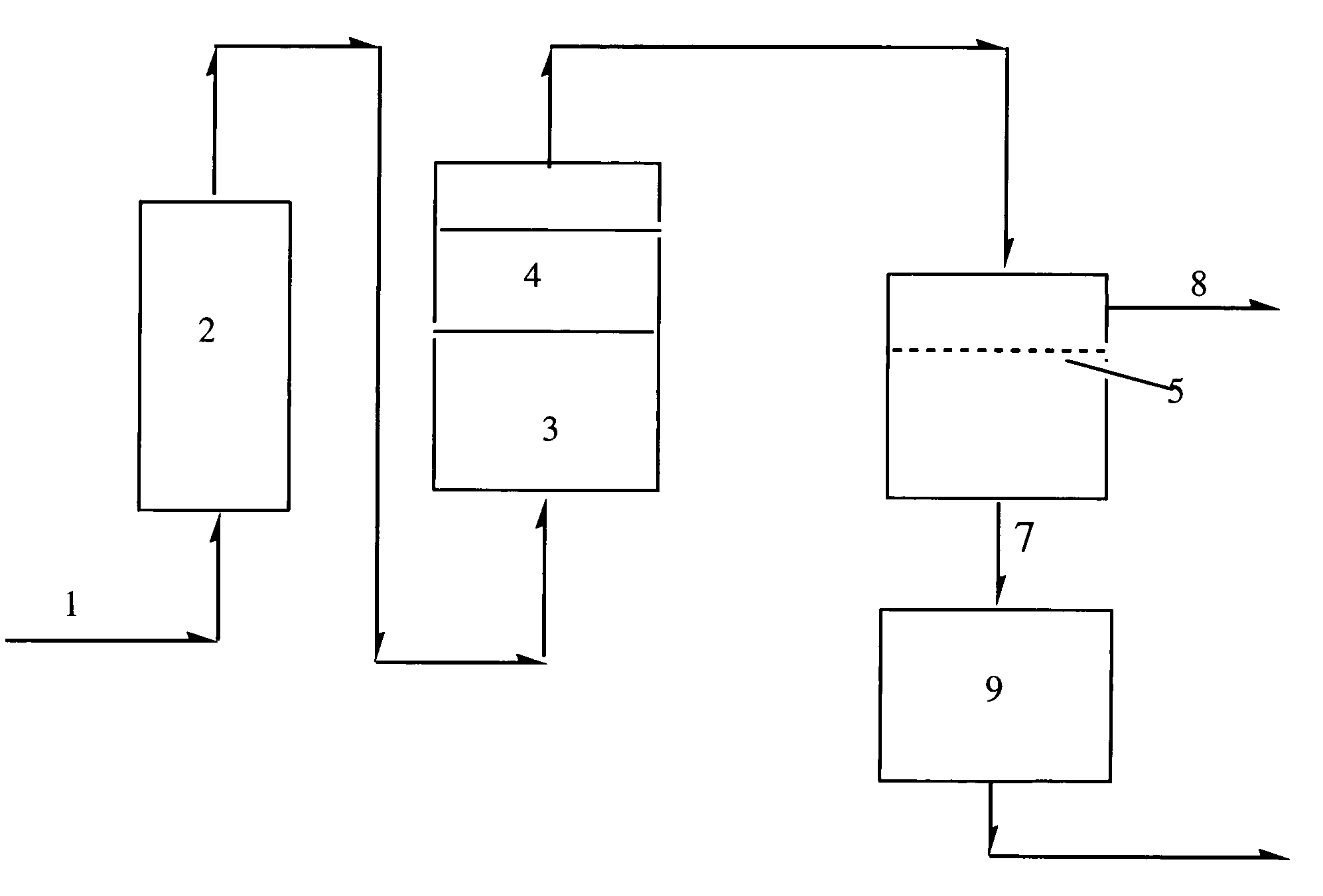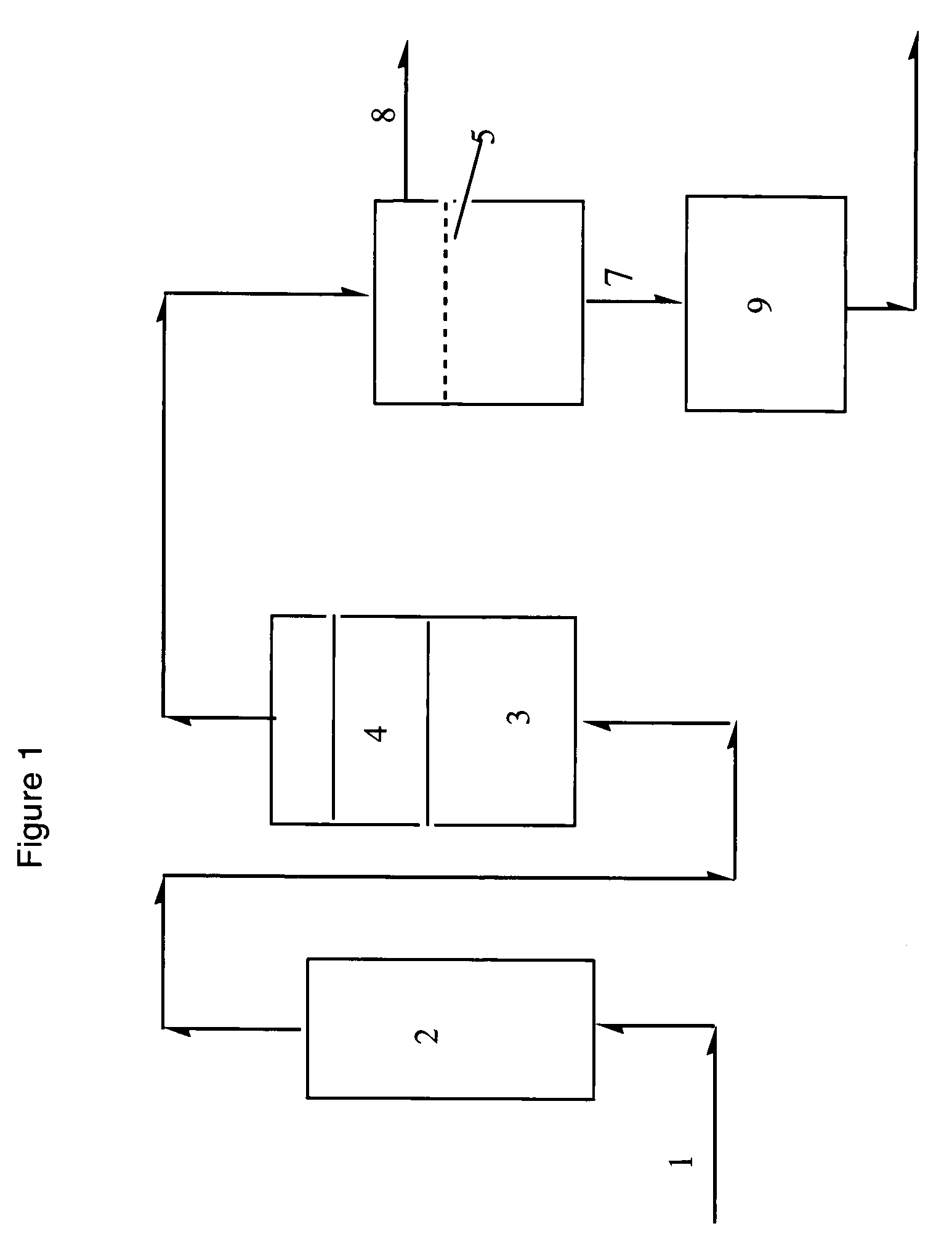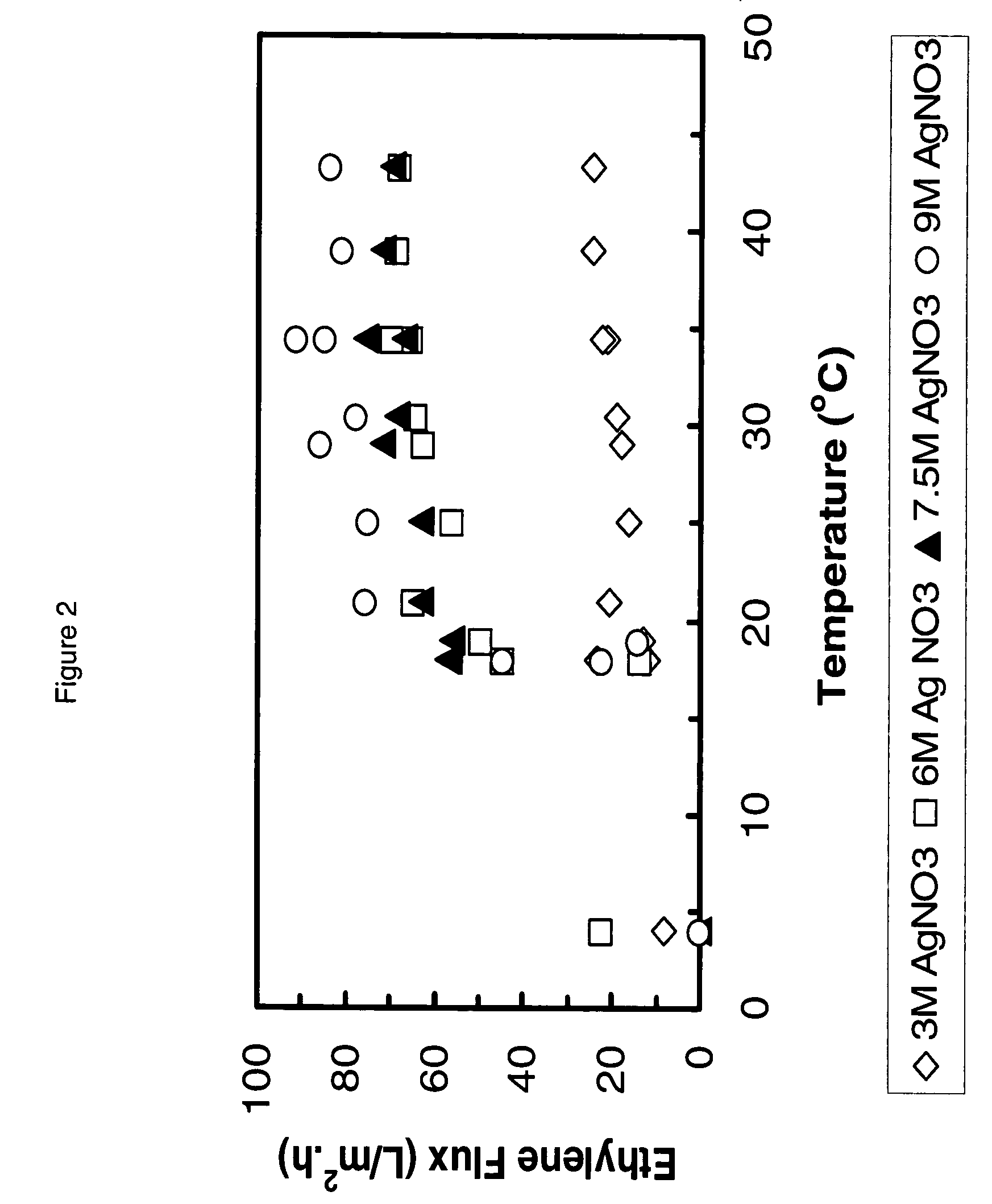Process for the separation of olefins from paraffins using membranes
a technology of olefins and paraffins, applied in the field of paraffins from olefins, can solve the problems of patents that do not teach separating alkenes from alkanes (paraffins), reference totally fails to teach chelating silver or copper (i) (e.g. cuprous) metal compounds in semi-permeable membranes, and silver nitrate is not suitable as a material
- Summary
- Abstract
- Description
- Claims
- Application Information
AI Technical Summary
Benefits of technology
Problems solved by technology
Method used
Image
Examples
example 1
Preparation of Chitosan Membrane
[0042]A solution of chitosan was prepared by dissolving crude chitosan (Aldrich Chemical Company) in 2% Acetic Acid in water followed by filtration of the solution through a 0.45-micron filter. The resulting filtered solution contained about 1.1 wt % chitosan. A layer of this solution was cast on a glass plate and a gentle current of air was passed over it until it was substantially dry. The quantity of 1.1 wt % chitosan solution taken was calculated to give a dry chitosan membrane of about 45-micron thickness. The resulting membrane was removed from the glass surface using a knife and then placed in 0.8M NaOH in ethanol: water (5:1) to convert the ammonium groups to the free amino form. The chitosan membrane was then removed from the ethanol-water solution and washed repeatedly in water to remove ethanol and salts and finally stored in water.
example 2
Impregnation of the Chitosan Membrane with AgNO3
[0043]Solid AgNO3 was dissolved in water to afford individual aqueous solutions with concentrations of 3M AgNO3, 6M AgNO3, 7.5M AgNO3 and 9M AgNO3. Pieces of the chitosan membrane, prepared as described in Example 1, were immersed overnight (16 hours) in the appropriate concentration AgNO3 solutions. The resulting membranes were assembled in the test apparatus.
example 3
Evaluation of AgNO3 Containing Chitosan Membrane
[0044]An AgNO3 containing chitosan membrane, prepared as described above, was placed in a test cell. The thicknesses of the membranes were ˜45 μm. The active area of the test cell was 4 cm in diameter. A test-gas mixture of ethylene (62%) and ethane (38%) was bubbled through water to humidify the test-gas and then flowed over the membrane at a rate of about 40 ml (STP) min−1. The pressure on the test gas side of the membrane was approximately 50 psig and the pressure was approximately atmospheric on the transmitted gas side. The test cell and humidification apparatus were immersed in a water bath maintained at a controlled temperature. The gas transmitted by the membrane was analyzed using a gas chromatograph. In all cases, the purity of the transmitted gas was >99.5% ethylene. The flow of gas through the membrane was recorded as a function of temperature for chitosan membranes prepared from AgNO3 containing solutions of different conc...
PUM
| Property | Measurement | Unit |
|---|---|---|
| temperature | aaaaa | aaaaa |
| pressure | aaaaa | aaaaa |
| thickness | aaaaa | aaaaa |
Abstract
Description
Claims
Application Information
 Login to View More
Login to View More - R&D
- Intellectual Property
- Life Sciences
- Materials
- Tech Scout
- Unparalleled Data Quality
- Higher Quality Content
- 60% Fewer Hallucinations
Browse by: Latest US Patents, China's latest patents, Technical Efficacy Thesaurus, Application Domain, Technology Topic, Popular Technical Reports.
© 2025 PatSnap. All rights reserved.Legal|Privacy policy|Modern Slavery Act Transparency Statement|Sitemap|About US| Contact US: help@patsnap.com



